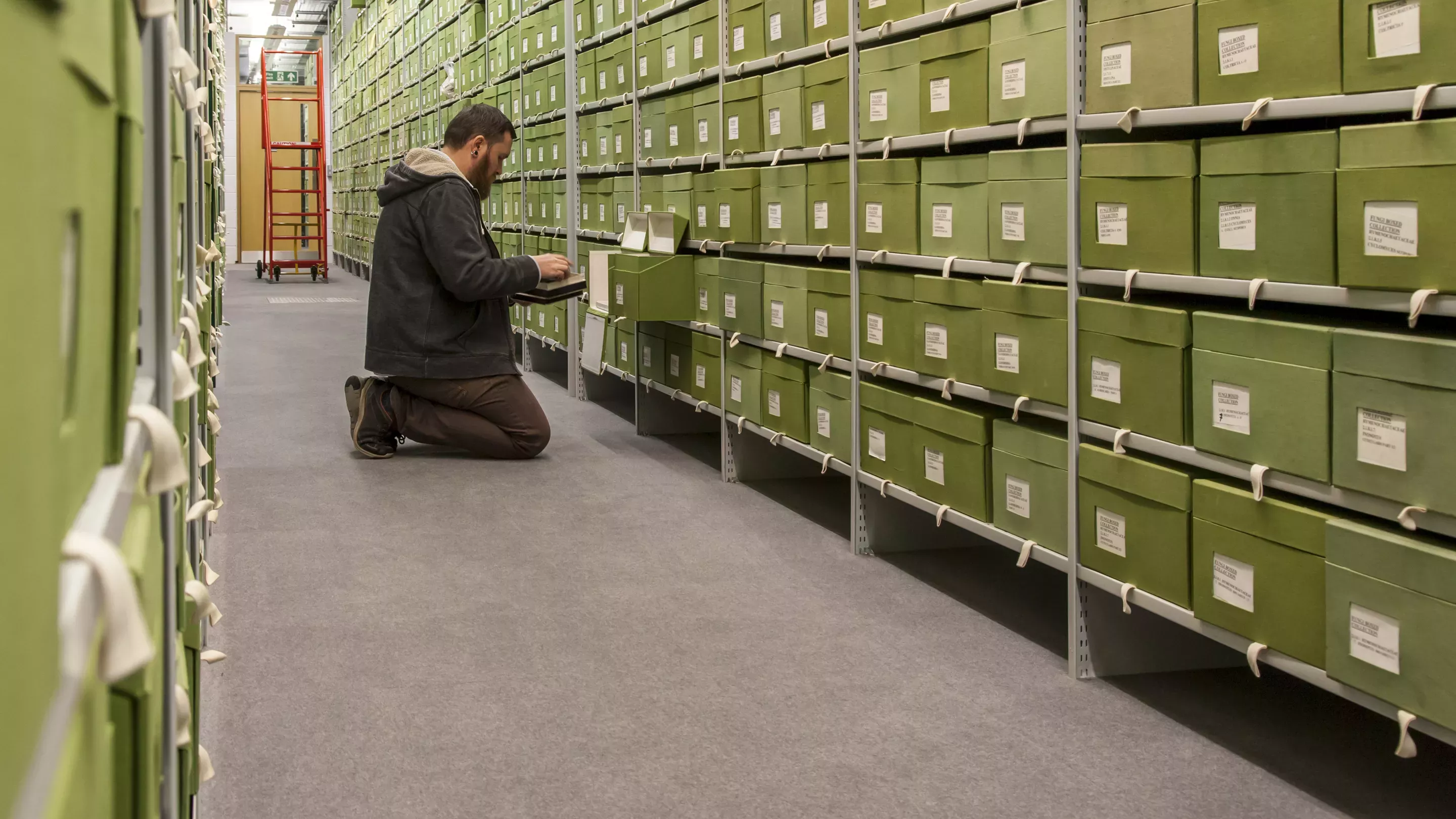25 August 2021
The psychedelic cicada-infecting fungus
An appeal on Twitter has led to a remarkable addition to our Fungarium collection.

The utopian dream and ultimate ambition of any natural history collection is to become a microcosm of the natural world around us and represent the diversity of the world, for us to study and understand that diversity in a single, accessible location.
It might be a colossal task we will never truly achieve, but we do fieldwork, exchange specimens, and accept donations to slowly creep inch by inch towards it.
With this in mind, we seek to enhance our collections by adding greater diversity to it, and this can be done in some new and very modern ways…
The emergence of brood X cicadas
In May and June this year, hundreds of billions of the brood X periodical cicadas (the wonderfully named Magicicada septendecim) emerged from their 17-year childhood spent underground in the eastern USA.
These noisy little insects are a spectacular phenomenon; all of them screaming for attention and engaging in a massed reproductive frenzy before laying their eggs in trees and dying.
The eggs hatch up in the tree canopy and the larvae head downwards and burrow into the soil to spend another 17 years below ground before starting all over again.

Fungus vs. cicada
I adore entomopathogenic fungi (fungi that parasitise insects), and I am also a fan of hallucinogenic fungi (purely academic), and as it happens there is a fungus called Massospora cicadina that ticks both boxes and drives cicadas into a mind-controlled, hypersexual frenzy.
The fungus infects the cicada, it eats its gonads, it grows inside it and makes the cicada’s butt fall off.
A plug of fungal tissue hangs out the back, and like a pepper pot of doom, it spreads Massospora spores everywhere it goes, infecting other cicadas.
Spores that land on the soil will lie in wait.
When the baby cicadas hatch and head to the ground to burrow, they get infected.
The fungus then lies dormant inside them for the whole 17 years, before kicking into action once the adult cicada emerges to begin mating.
Alternatively, the fungus can lie dormant in the soil and infect the adult cicadas on their journey upwards to emerge from the soil and into the world above.
Bugs on drugs
Massospora, produces psilocybin and psilocin, the same hallucinogens found in Psilocybe spp (commonly known as as magic mushrooms), even though the two groups of fungi aren’t even remotely closely related.
The fungus also produces cathinone, the amphetamine compound normally found in Khat, a leafy plant native to Ethiopia that has been made illegal to possess and use in several countries.
It is not known exactly what the psilocybin and cathinone do to the cicadas, but it's thought it could act as pain relief as they lose their abdomen, make them hungry and help make them hypersexual.
Either way, these effects act to increase the likelihood of the cicada encountering other cicadas, and make infection of them by the spore-spreading butt tuft more likely.
More bizarrely, infected male cicadas make the chirping sounds of eager females and attract other males to them who then risk infection themselves.

The Fungarium
So why is all this relevant to Kew?
Kew houses the largest, and one of the most important scientific collections of fungi in the world.
Our Fungarium is an ever growing repository of our world’s fungal diversity and contains around 1.25 million specimens.
Up until a few weeks ago, we only had a single specimen of Massospora cicadina in our entire collection, and only a handful of specimens of other Massospora species.
In terms of usefulness when it comes to wanting to use the collection to study these fungi, it was fairly poor.
Events in the USA presented a once-in-a-17-year opportunity and so I put out a hopeful plea on Twitter.
The tweet received 22,000 Twitter impressions and several contacts from people in the eastern US offering specimens of infected adults.
We have received donations of four collecting events, from three different US states and currently 26 infected, adult cicadas.
All of which have been newly accessioned and stored in the collections.
It’s at this point I want to say we are immensely grateful to Escher Cattle and Dr Ashley Kennedy for helping with our acquisition of these specimens, they shall be immortalised in our collections database and on specimen labels.

What happens to the specimens now?
My colleague working on the fungi side of the Plant and Fungal Trees of Life (PAFTOL) project has already taken samples to be cultured with a view to sequencing their genomes.
With that information we can start to add the Massospora fungi onto the tree.
We may also be able to make the genomic data available to other researchers for comparison and, given that the only specimen we had previously was from the same brood X when it emerged in 1936, we can also try to get DNA from that.
We can then compare the genomes from several generations ago.
There is, additionally, the potential to look at some of the biochemisty of the interaction between cicada and fungus.
We now have a significantly enhanced collection (a 2600% increase in collection size to be exact) of this species of fungus and given that it will be 17 years before we even have the chance of getting more specimens, we have done well out of this brood’s emergence.
Please do not send us unsolicited or unaddressed specimens or materials. We can only add material that has been brought in to the UK according to strict procedures.




